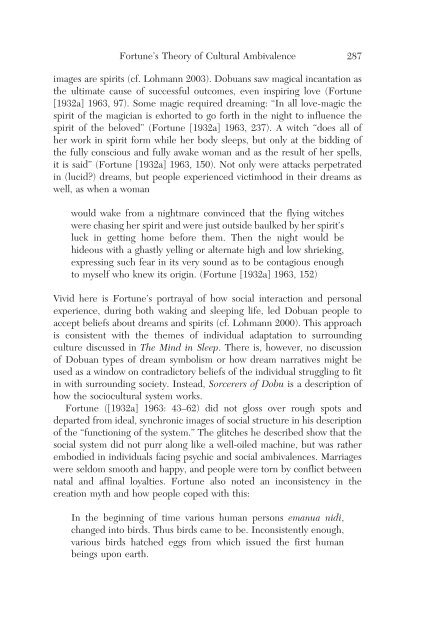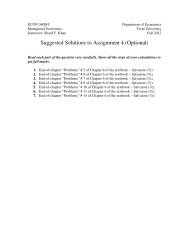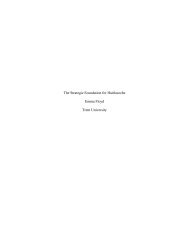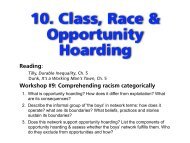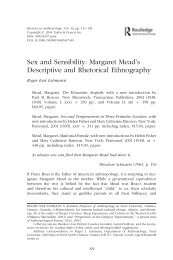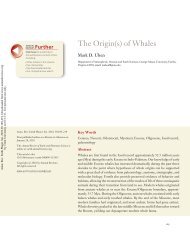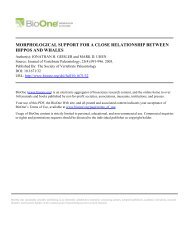REO FORTUNE'S PSYCHOLOGICAL THEORY OF CULTURAL ...
REO FORTUNE'S PSYCHOLOGICAL THEORY OF CULTURAL ...
REO FORTUNE'S PSYCHOLOGICAL THEORY OF CULTURAL ...
You also want an ePaper? Increase the reach of your titles
YUMPU automatically turns print PDFs into web optimized ePapers that Google loves.
Fortune’s Theory of Cultural Ambivalence<br />
287<br />
images are spirits (cf. Lohmann 2003). Dobuans saw magical incantation as<br />
the ultimate cause of successful outcomes, even inspiring love (Fortune<br />
[1932a] 1963, 97). Some magic required dreaming: “In all love-magic the<br />
spirit of the magician is exhorted to go forth in the night to influence the<br />
spirit of the beloved” (Fortune [1932a] 1963, 237). A witch “does all of<br />
her work in spirit form while her body sleeps, but only at the bidding of<br />
the fully conscious and fully awake woman and as the result of her spells,<br />
it is said” (Fortune [1932a] 1963, 150). Not only were attacks perpetrated<br />
in (lucid?) dreams, but people experienced victimhood in their dreams as<br />
well, as when a woman<br />
would wake from a nightmare convinced that the flying witches<br />
were chasing her spirit and were just outside baulked by her spirit’s<br />
luck in getting home before them. Then the night would be<br />
hideous with a ghastly yelling or alternate high and low shrieking,<br />
expressing such fear in its very sound as to be contagious enough<br />
to myself who knew its origin. (Fortune [1932a] 1963, 152)<br />
Vivid here is Fortune’s portrayal of how social interaction and personal<br />
experience, during both waking and sleeping life, led Dobuan people to<br />
accept beliefs about dreams and spirits (cf. Lohmann 2000). This approach<br />
is consistent with the themes of individual adaptation to surrounding<br />
culture discussed in The Mind in Sleep. There is, however, no discussion<br />
of Dobuan types of dream symbolism or how dream narratives might be<br />
used as a window on contradictory beliefs of the individual struggling to fit<br />
in with surrounding society. Instead, Sorcerers of Dobu is a description of<br />
how the sociocultural system works.<br />
Fortune ([1932a] 1963: 43–62) did not gloss over rough spots and<br />
departed from ideal, synchronic images of social structure in his description<br />
of the “functioning of the system.” The glitches he described show that the<br />
social system did not purr along like a well-oiled machine, but was rather<br />
embodied in individuals facing psychic and social ambivalences. Marriages<br />
were seldom smooth and happy, and people were torn by conflict between<br />
natal and affinal loyalties. Fortune also noted an inconsistency in the<br />
creation myth and how people coped with this:<br />
In the beginning of time various human persons emanua nidi,<br />
changed into birds. Thus birds came to be. Inconsistently enough,<br />
various birds hatched eggs from which issued the first human<br />
beings upon earth.<br />
pacs-32-02-06.indd 287 9/7/2009 2:32:34 PM


